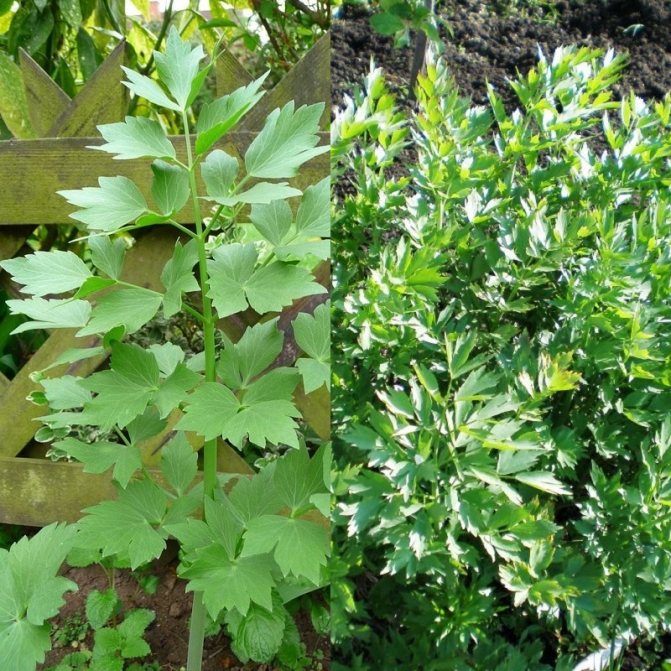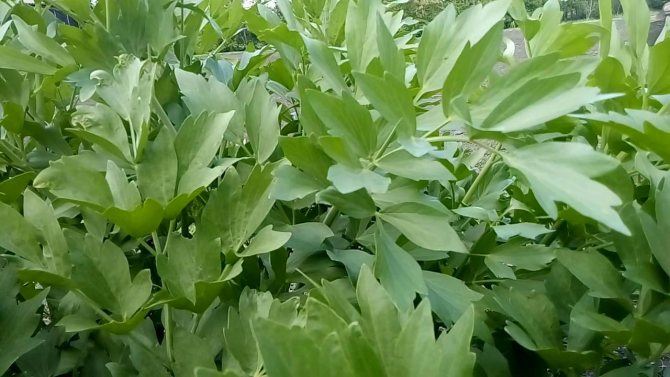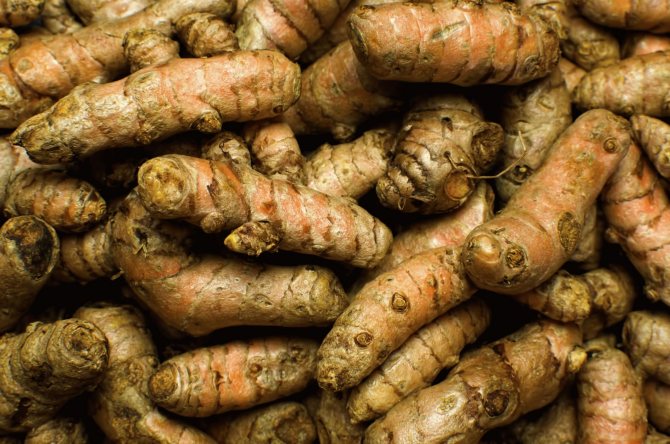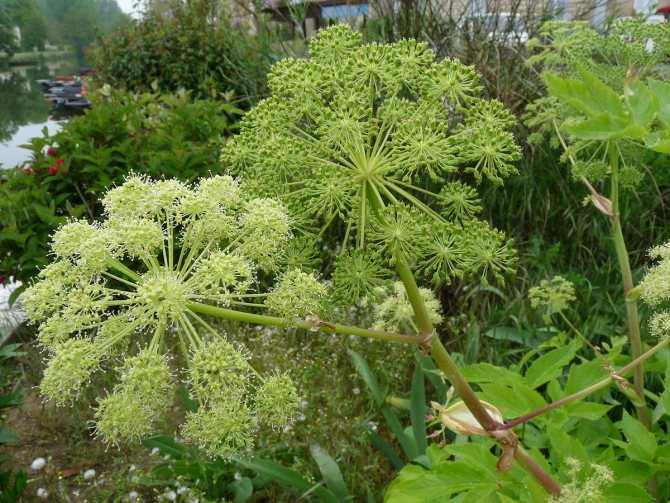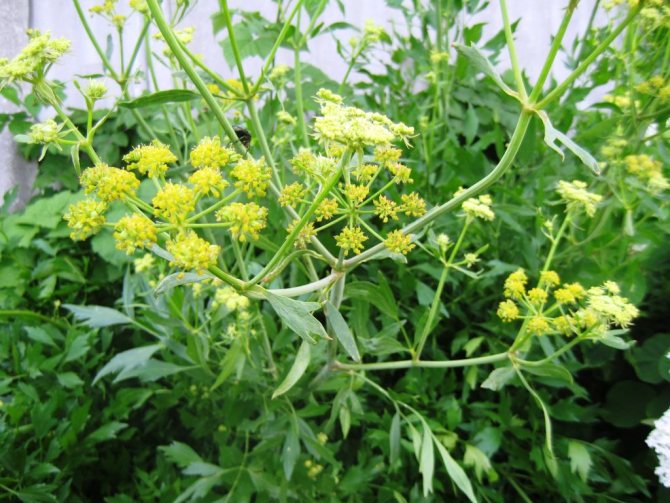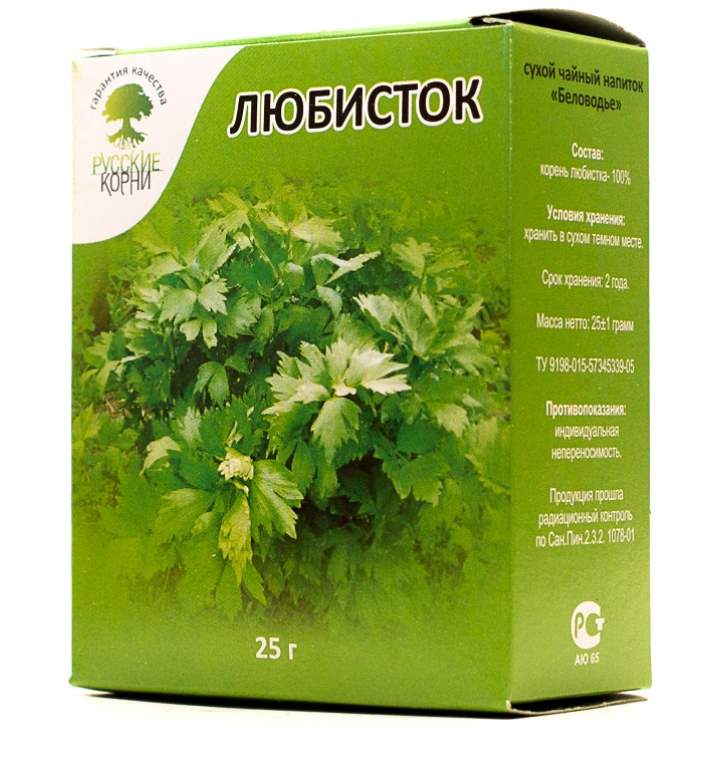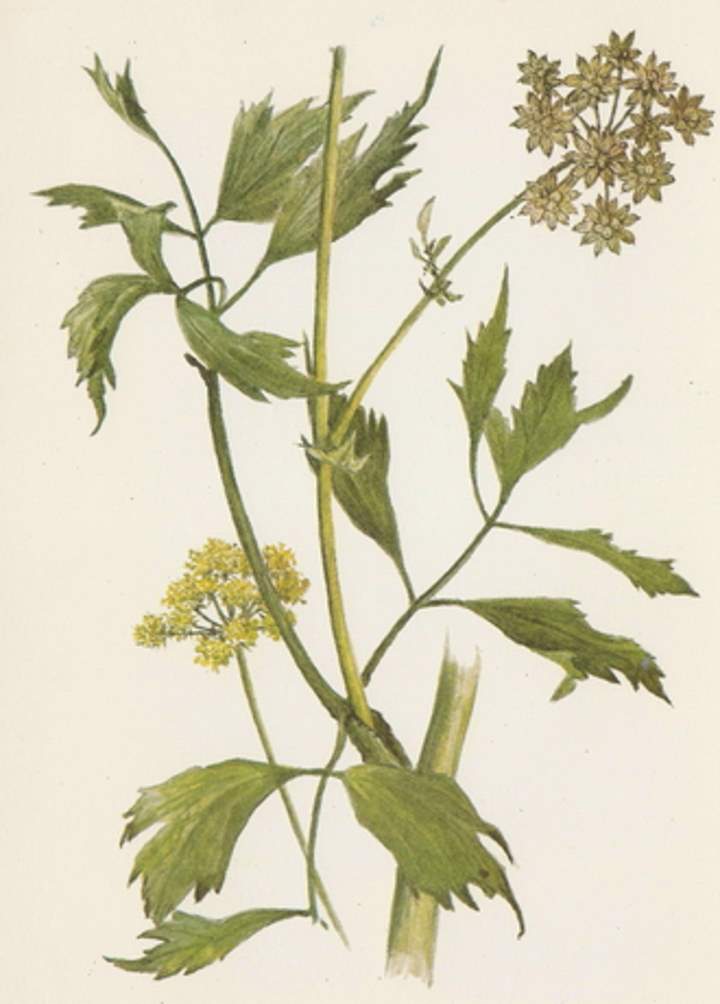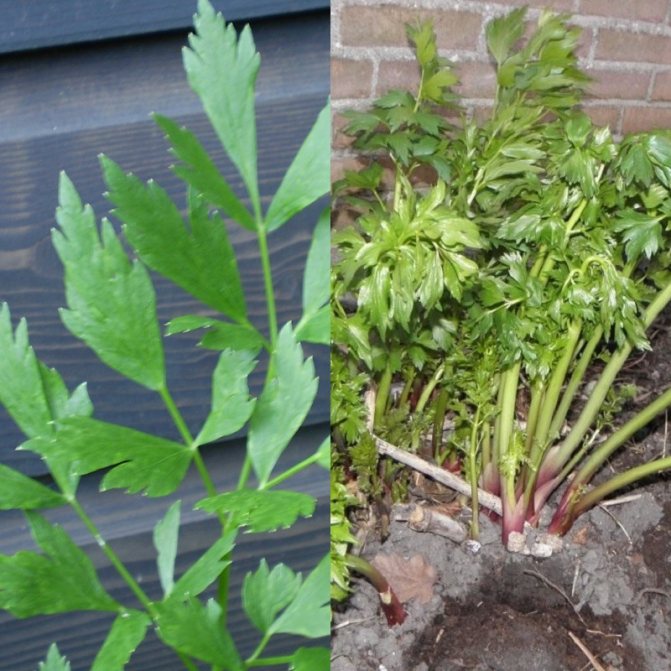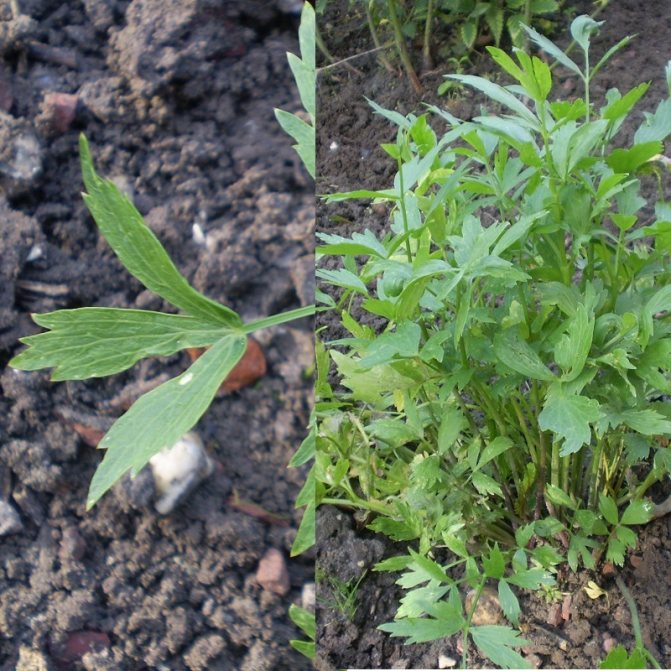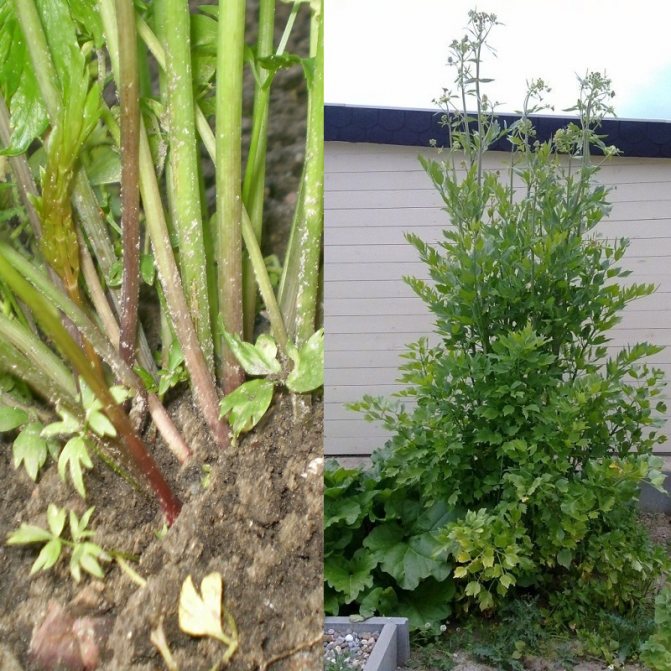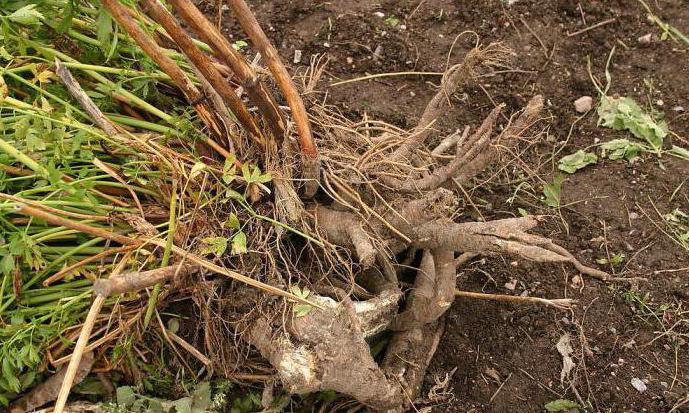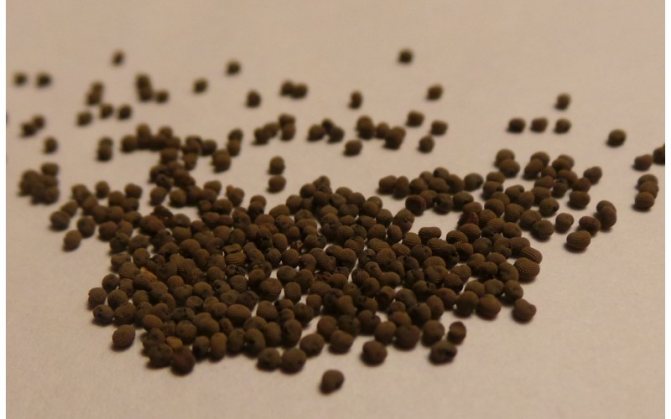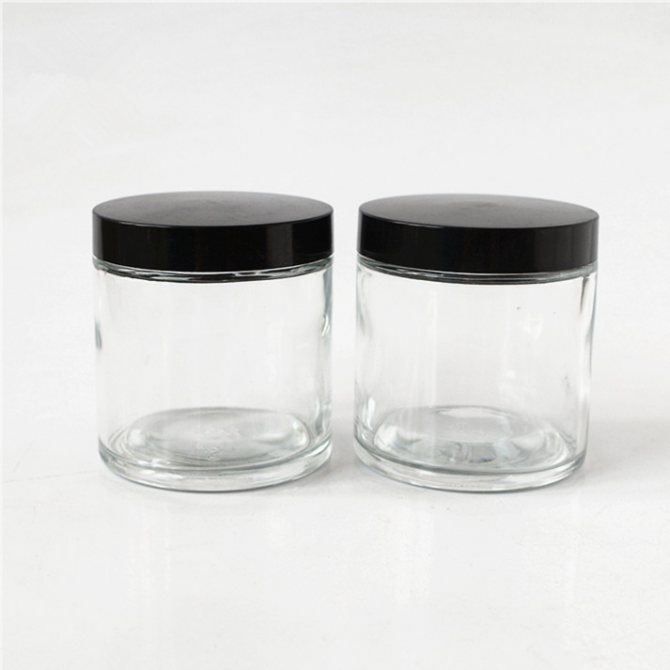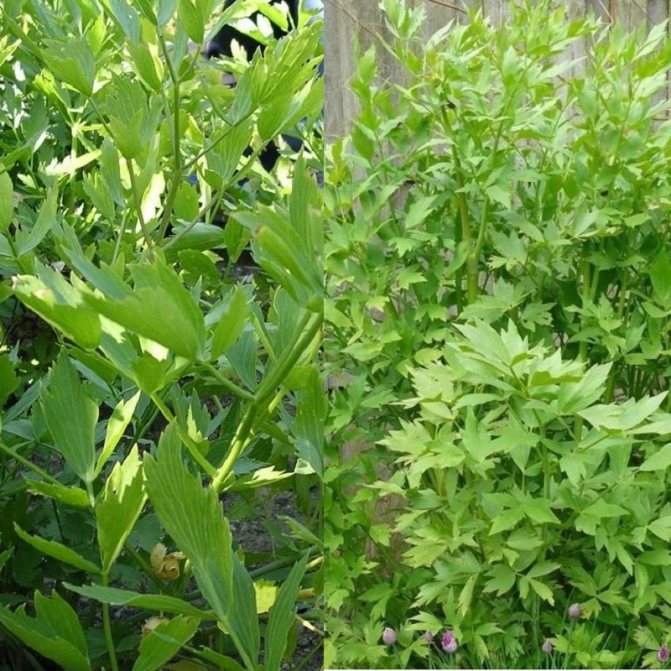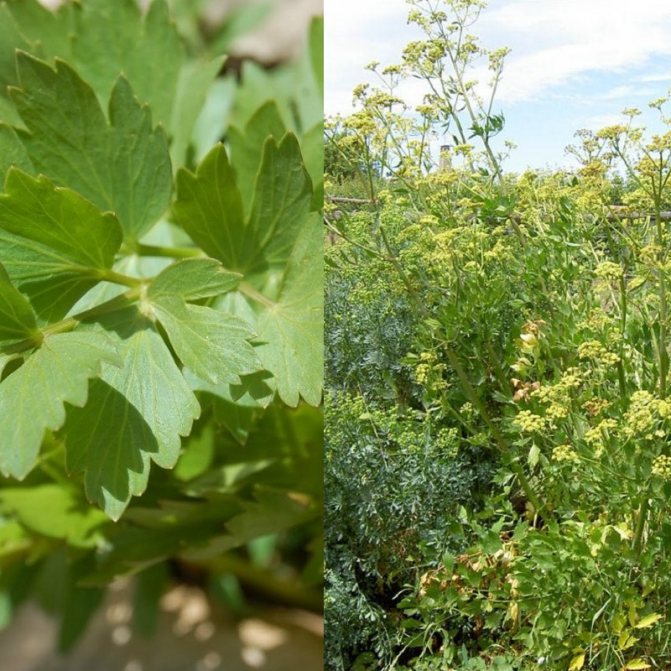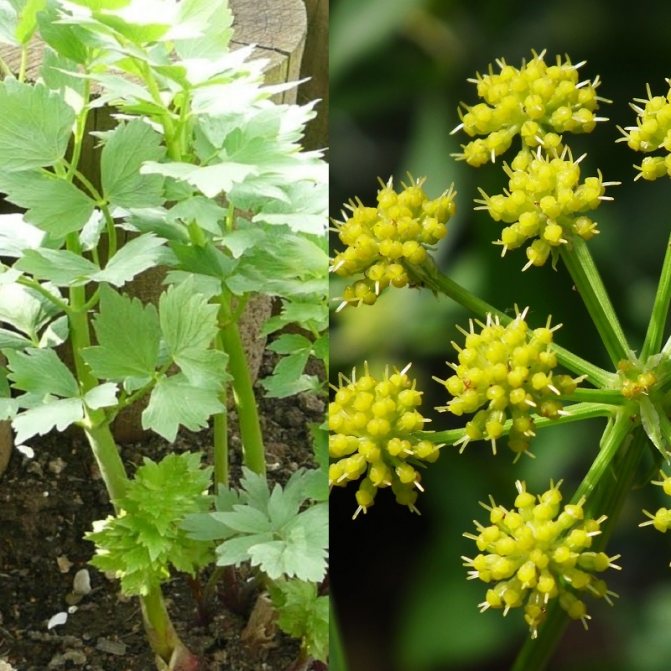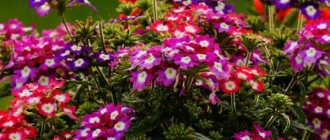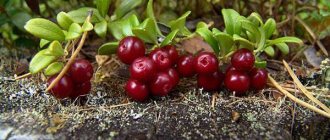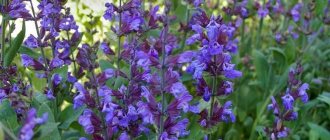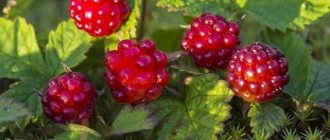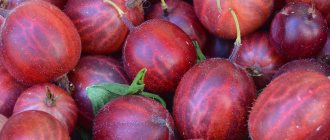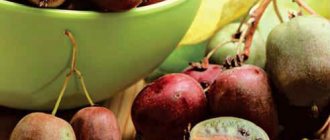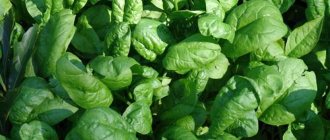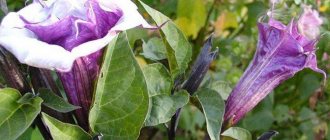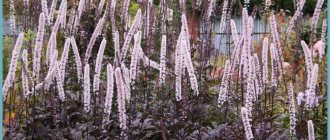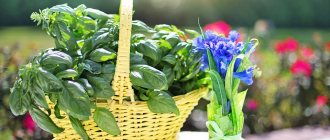Lovage (Levisticum) is a perennial plant of the genus lovage, the only representative of which is Lovage officinalis The main feature is green feathery leaves, an erect stem and a pronounced aroma.
In ancient times, lovage was very popular among girls. The main purpose is a love potion for the subordination and retention of men. Today, this has been partially forgotten and lovage is widely used in folk medicine for the preparation of decoctions and infusions.
Due to the large amount of essential oils, the plant is recognized in many countries as traditional medicine and is included in the register of medicinal herbs. Broths perfectly cope with diseases of the gastrointestinal tract, genitourinary system, used for the superficial treatment of skin diseases.
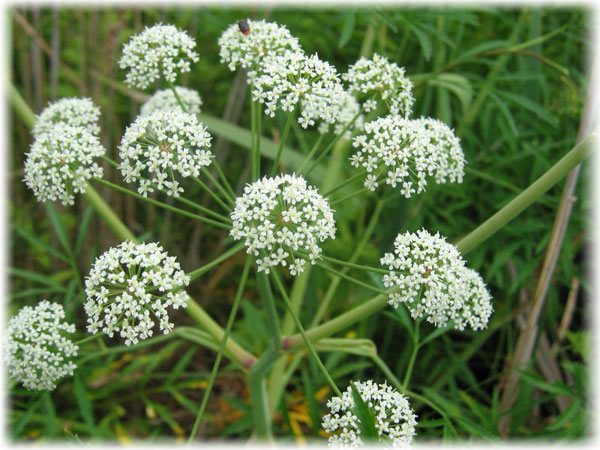
Description: A perennial plant of the umbrella family up to 2 meters high with feathery monochromatic bright green leaves.
For medicinal purposes, one form of the plant is used: medicinal lovage.
Often, for the preparation of decoctions and infusions, the root is used in a crushed form.
Homeland - Iran and Afghanistan, but it grows in most of Europe, Africa and other countries, it is found throughout the territory of the SND with a temperate climate. Some gardeners cultivate lovage in their garden for further use for medicinal purposes.
But there is a belief that if you plant bushes along the fence, troubles will bypass you.
Among the many medicinal herbs, lovage is easily distinguished by its characteristic leaf shapes and strong aroma. But there are still amateur herbalists using another plant similar to lovage for treatment. Be careful when collecting, there are a large number of poisonous plants that cause serious consequences in the form of shortness of breath, anemia, poisoning accompanied by vomiting and intestinal upset, rash, dizziness, etc.
The appearance and smell of lovage is very similar to celery, where there is also a developed branched root system. The root system is so powerful that sometimes it takes some effort to remove it from the garden plot.
The plant tastes bitter. The stem is tubular, erect, branches closer to the apex.
Shiny, feathery leaves with serrated ends. Single yellow flowers form a complex umbellate inflorescence. Flowering begins in June. Oval-shaped fruits ripen in early September.
As soon as the people do not call lovage: love, love-grass, love potion, love potion, love, piper, fence, dawn grass.
In folk medicine, all parts of the plant are used: the root and stem with leaves.
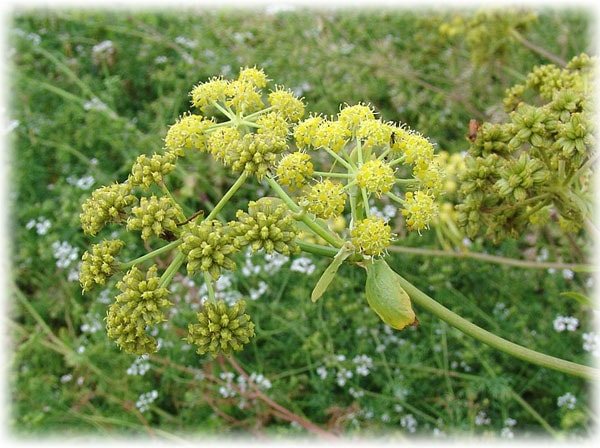

Chemical composition
The chemical composition of the plant is very complex. The composition of the root part differs sharply from the green part.
The root portion is a complex pattern of furocoumarins.
Photosensitizing properties are also attributed to the plant.
The roots contain:
- lecithin,
- mineral elements
- organic acids.
Butylphthalide and ligustilide in the root of the plant are responsible for the characteristic odor.
The green part of the plant contains vitamins of almost all groups, essential oils and minerals.
Lovage has a wide range of medicinal properties. Let's take a look at what is remarkable about this plant.
Lovage combines analgesic and anti-inflammatory properties. He has no equal and as a diuretic. Suitable for use to relax the intestines, in other words, it is an excellent laxative.
Promotes the elimination of parasites from the human body. Lovage is an excellent digestive stimulant, it produces good gastric juice. Diseases such as edema (resulting from kidney problems), liver disease, as well as the cardiovascular system - this is an additional list of indications for the use of the plant.
If a person is worried about a migraine or insomnia, then lovage is perfect for this purpose, because it has a sedative effect.
Among the indications for use are also lung diseases.
During colds, when vitamins are in short supply, lovage will serve as a general tonic that will help strengthen the immune system.
Contraindications
Like all medicinal plants, lovage has contraindications. It should not be taken in the presence of such diseases or conditions of the body:
- pregnancy,
- breast-feeding,
- hypertension,
- allergy to umbrella plants,
- severe pain
- menstruation,
- chronic hemorrhoids,
- individual intolerance,
- children under 12 years old,
- kidney disease in the acute stage,
- together with diuretics.
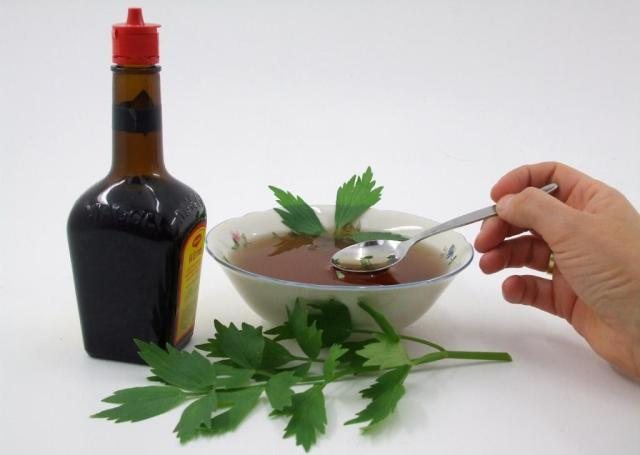

The dosage of taking funds based on this plant directly depends on the age, state of health and individual characteristics of the organism. Medicines containing lovage are not always safe, so they must be used with extreme caution.
Herb lovage application
First, lovage is a medicinal plant. Its second advantage is considered to be used as a seasoning for a variety of dishes. The plant has become widespread in the field of cosmetology (in particular, skin and hair care).
The plant has a unique property - it can be used almost without waste. And the root, and the leaves, and the petioles - there is a use for everything. But there is one condition.
During the period of preparation of lovage for flowering (it begins to release peduncles) or when the plant has completely bloomed, it is strictly forbidden to use it. The purpose of the intended use is irrelevant. It must be remembered that this period completely excludes the use of the plant either in the form of a medicine or in the form of a seasoning for food.
You can forget about the beneficial properties at this time, lovage, accumulating hazardous substances, becomes poisonous. This is precisely the reason for the ban on use. As for the rest of the time, do not be afraid, it can be collected, prepared for storage, consumed raw.
The plant helps great:
- with anemia;
- with edema;
- if you have a headache;
- in the presence of heart disease;
- as an antihelminthic agent;
- if hoarseness or bronchitis worries;
- if you need sedative support;
- with gout.
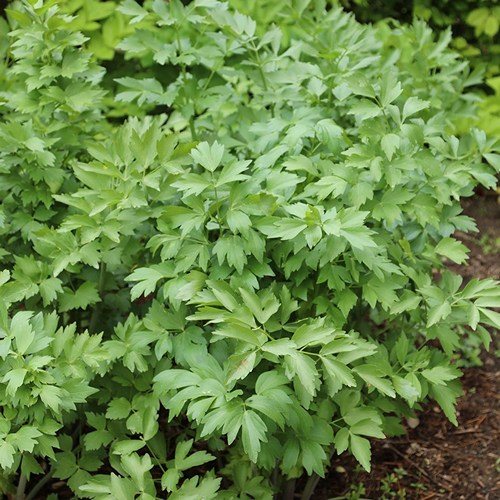

The plant improves digestion
Various dishes will be much more aromatic and appetizing if you add lovage greens to them. As a seasoning, lovage will perfectly complement almost any salad. Soup made from potatoes, peas, beans or lentils will take on a bold flavor with this seasoning.
Lyubets serves as an addition to fried vegetables, stews, and seafood dishes. And if you add spice to zucchini (as you know, this vegetable has a weak taste), then adding lovage to vegetables with a weak taste - such as, for example, zucchini - revives it, the taste of the vegetable becomes more intense.
Home cooking allows the use of all parts of lovage. The greens of love-herbs are characterized by a sharp, sweetish taste, there is a hint of light bitterness, but at the same time a strong, pungent and persistent aroma. It is allowed to use both dried and fresh.
Dishes to which lovage is added:
- Cabbage soup;
- Borscht;
- Soups;
- Broths;
- Roast beef, lamb;
- A fish;
- Domestic bird;
- Rice;
- Vegetables.
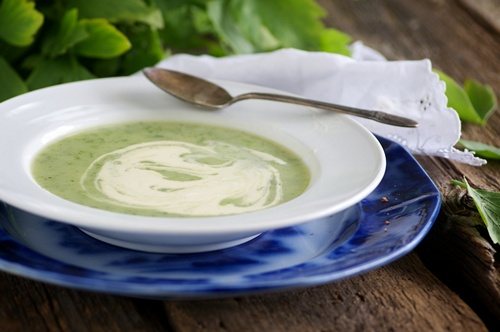

Creamy herb soup
Summer salads will take on a different shade thanks to fresh leaves, and winter ones will be supplemented with a new taste with the help of a powder prepared from the root of the plant. Lovage is also great for dishes made from legumes and seafood. The taste of various gravies and sauces will improve significantly.
In many countries, lovage is used as a side dish, for this purpose the stems and leaves of the plant are deep-fried.
On the scale of the food industry, a plant such as lovage is used as a flavoring agent for confectionery. In the process of making alcoholic beverages, it is also used.
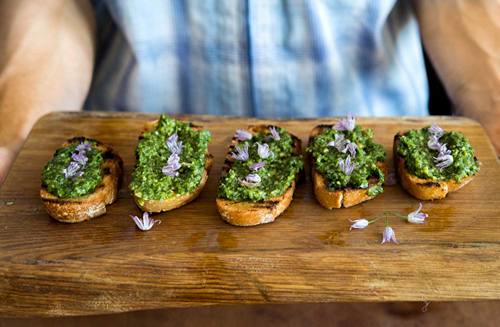

Quick cacci with green garlic and lovage
May serve as a complement to spices like parsley, rosemary and creeping thyme. Spice is a strong natural flavoring agent and should be used sparingly. Approximate norm: fresh plant - 1 - 1.5 g per 1 liter of product, and in the form of dry powder 0.2 - 0.3 g.
Description of the plant
The lovage plant and its beneficial properties are used in the treatment of many diseases. It is also called mountain celery, love-grass, piper, perennial celery, fence grass and others. The size of the plant is quite impressive: under good conditions, it can grow to the height of human growth. It has a bare, tubular stem that branches upward. Favorite grass leaves have jagged areas on top. From below, they usually germinate on short cuttings, and from above on longer ones.
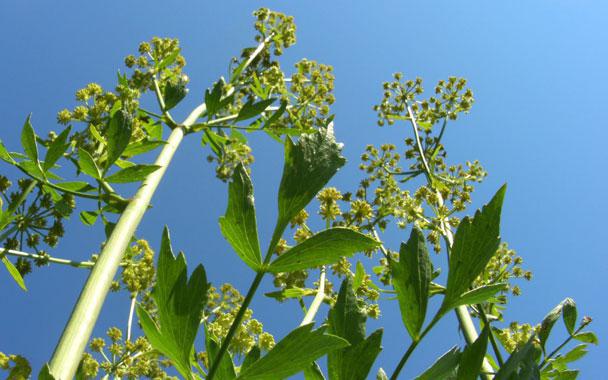

During the flowering period, inflorescences begin to appear on top. They are made up of small flowers, each of which often has five petals. The flowers are light in color, usually soft shades of yellow. You can observe the flowering of this herb in the first months of summer, and about 1.5 months after the start of flowering, the fruits ripen.
How to store the spice
It is allowed to store lovage both in its entirety and in the form of a powder, which is pre-mixed with salt. Ground spices can be stored for up to 1.5 years. Storage conditions: in a cool dark place, in a hermetically sealed container.
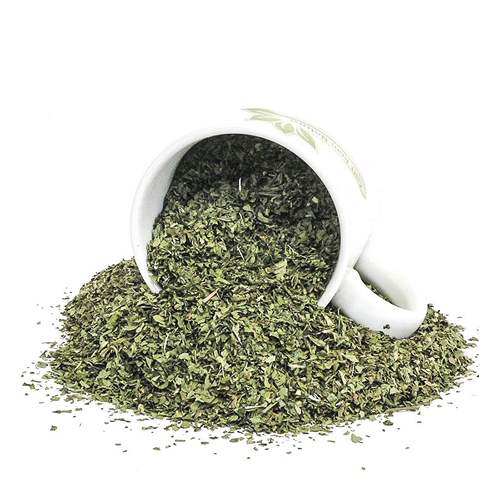

Dry seasoning
The beneficial properties of lovage are recognized not only in medicine, in cosmetology it has also found wide application. In the field of perfumery, it is used as a perfume, in spa salons, lovage is an ingredient for aromatherapy, as well as in massage procedures. The composition of hand and foot care products is often supplemented with an extract of this wonderful herb.
Collection and storage of lovage
The roots of lovage are harvested in early spring or autumn. When harvesting them in spring, they are dug up, washed, too large roots are cut in half, after which they are strung on a rope and dried under a canopy or in a room with good ventilation. You can speed up the process by using an oven or electric dryer for drying. The optimum temperature for lovage roots is 35 ˚C. Dry raw materials are crushed on a coffee grinder, sifted through a sieve and stored in hermetically sealed glass jars in a dry, cool, dark room.
If you harvest the roots in the fall, you can store them all winter in the cellar, like carrots, sprinkled with dry sand.
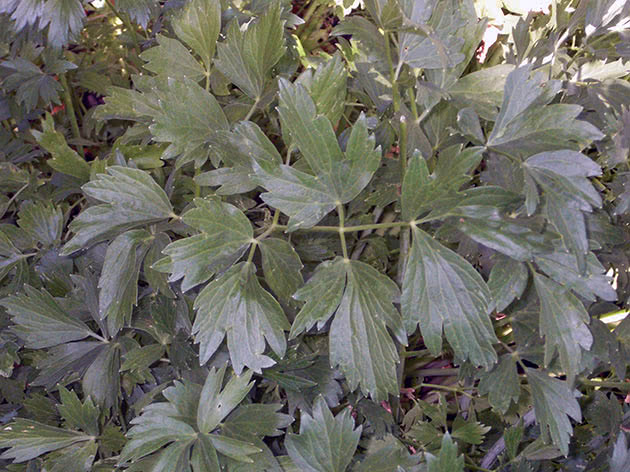

In the photo: Lovage leaves
Lovage leaves must be collected during or after flowering: until umbrellas appear on the plant, there are too few nutrients in its leaves. It is better to cut the leaves after a good rain, after waiting for the bushes to dry.The leaves are dried under the same conditions as the roots: they are laid out in a layer on paper or fabric under a canopy or in a ventilated attic. Greens can also be dried in a dryer at 35 ˚C. Store dry lovage leaves in a glass container.
How to plant and grow parsley at home and in the garden - pro tips
Lovage fruits are also medicinal raw materials, which are harvested after they are fully ripe, dried, threshed and stored in a tightly sealed container.
Lovage from alcoholism
Medicinal lovage is nothing more than a herbal remedy that contains a large dosage of potassium salts. Plus, the plant contains enough tannins, essential oils and antioxidants.
With regular intake, a persistent aversion to alcoholic beverages is formed. A person, first of all, begins to react negatively to the smell that comes from alcohol. Signs such as nausea and dizziness appear. Toxins and hazardous substances that accumulate with prolonged use of alcohol, due to the cleansing property of the herb, are quickly eliminated from the body. The reason for this is the strong diuretic effect.
Recipe
Root decoction
Pre-dry the root of the plant, grind, it will take 3 tbsp tablespoons of dry product. Pour 300 ml of boiling water into a heat-resistant container. Mix all ingredients thoroughly, then put on fire and simmer for 10 minutes. After the broth has cooled down a little, strain it with gauze.
How to drink - 50 ml daily every morning. The treatment time is individual - continue taking until the person completely overcomes the addiction.
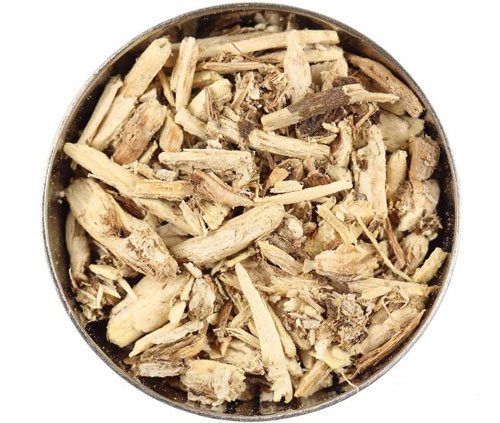

Dry root
Contraindications
The list of restrictions includes:
- individual intolerance, as well as allergies;
- kidney disease
- diseases of the bladder;
- gastritis, ulcer, hemorrhoids;
- pregnancy and lactation.
Folk recipes
- cooking decoction of roots: 1 teaspoon of chopped roots is poured with a glass of hot water, boiled in a sealed container for 30 minutes and cooled for 10 minutes. Then the broth is filtered and its volume is brought to the original with boiled water. Take 1-2 tbsp. l. 3 times a day.
- cooking infusion of roots: 1 teaspoon of crushed roots pour a glass of boiling water, cool slowly and filter. It is taken in equal portions during the day in 5-6 receptions.
- cooking infusion of herbs: 2 teaspoons without chopped root, pour 1/4 liter of cold water, heat to a boil and drain immediately.
- with headache - pour boiling water over the leaves and breathe for 5 minutes over the broth, covered with a towel.
- with kidney disease - Pour 30 g of dry root with 1 liter of boiling water. Insist for 30 minutes and drink in the morning on an empty stomach 1/2 tbsp.
- cure bronchitis the broth will help -1 tsp. dry root, pour 1 tbsp. water and boil for 30 minutes. Take 1-2 tbsp. l. 3 times a day before meals.
For women
The female half of humanity uses essential oil as an aphrodisiac. Lovage is credited with magical properties.
The advantage of lovage is its resistance to cold. It tolerates winter well. Early shoots appear. Even in the northern regions, there is every chance of getting seeds that are quite demanding for light, they need a sufficient amount of moisture and fertile soil.
The peculiarity of the plant is a two-year development cycle. At the beginning of the first year, a rosette of leaves with a rhizome appears; during the second year, a flowering stem and seeds grow. It is necessary to monitor a sufficient amount of moisture, otherwise there will be a growth retardation, a decrease in yield, and as a result, its quality will be minimized.
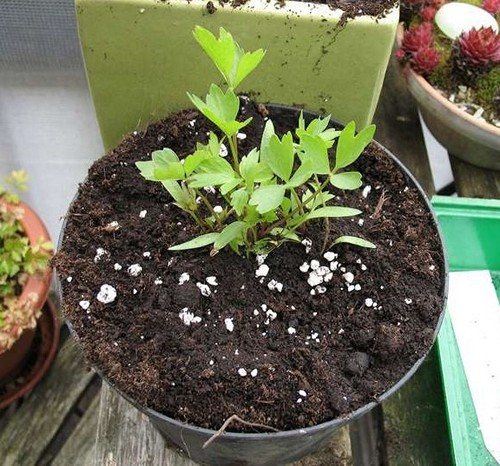

Growing on a windowsill
The breeding method of lovage is seeds that are sown either before winter or in early spring. Seeds that have been scattered by the wind (self-seeding) are transplanted into the beds, where new plants are grown.Lovage develops well during the division of perennial roots. If you want to seriously start breeding this plant with seeds, then it is best to sow not randomly, but in rows, first germinate green shoots about 10-15 cm, and then use them as young greenery.
Where grows
Lovage is a native of Iran and Afghanistan. Widely distributed in the South of the European continent. Grown in America, Russia, on other continents, as a spice. In some countries, the plant is included in the state pharmacopoeia, and therefore is cultivated on plantations as a medicinal plant material. Also, cultural cultivation on a large scale is carried out to obtain the valuable essential oil of lovage.
Lovage is not very picky about the composition and quality of the soil, unlike the weather conditions. The plant loves warmth, sufficient moisture in the soil. Grows well in pots and outdoors. Rarely runs wild.
Growing features
The peculiarities of growing lovage is that with proper care, the harvest can be obtained up to five times per season, cutting off the leaves in May, June, July, August and September. So, having planted even a few bushes of the plant, the family will not be left without fragrant and vitamin green. And there are only five components of success.
Once I sowed lovage along the fence separating my plot from the gutter. The seeds sprouted, the plants developed well in two years, but then they did not like something in this place, and they disappeared. Later, I was surprised to find the "fugitives" on the other side of the fence, where the lovage mastered the gentle edges of the gutter. Here he did not lack either water or sunlight. Based on this experience, now I plant lovage in a bright place on the site and do not regret water for it.
In the first year of life, the plant forms rosettes of shiny large basal leaves, and you can already start harvesting. From the second year of life, lovage begins to bloom regularly. In order to have a constant growth of young leaves, I remove the flower arrows, preventing their development. This is also important in order to harvest a good harvest of lovage rhizomes. In the year of sowing, they do not reach a large mass and grow only by the fall of the second year.
